BLOG
|
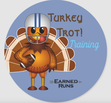 WEEK 2 OF THE 2020 TURKEY TROT TRAINING PLAN BEGINS TODAY. It's only the second week, but you should be feeling good about taking on this challenge! Think back to all the previous times you intended to make a commitment to train for a 5k but backed away. After this 7-day period is finished, training will have started to become a regular part of your days, a habit! By this time, you should also be able to recognize whether the plan fits your schedule. The WALKER long sessions fall on Sunday; for RUNNERS, it’s on Saturdays. Shift the calendar week one or more days as needed to make that day enjoyable. If it is, as the 3rd week commences you might start to look forward to those long easy-paced walks or run/walk/runss. Especially if you get out early and plan ahead to finish with a stop at a special coffee shop, or to come home to perform post-run stretches with a favorite hot or cold beverage waiting. This week the strength session targets the upper body. Are you looking at the schedule and wondering if the upper body strength (UBS) exercises might be skipped? One of the best ways to insure you will incorporate them into your routine is to determine in advance the specific moves you will be using to work out. If this part of the plan is a MENTAL CHALLENGE (you dread working out with your arms, the moves seem too complicated; no runners or walkers you know do them, etc.) why not start with just 1 bodyweight exercise. Bodyweight exercises by definition are performed without equipment, and thus can be done in a variety of places other than a gym. Another option is to save this work for another time in the week. My favorite method for NOT skipping UBS exercises is to perform several after a run, before I allow myself to go home. I do 3 total sets of pushups near outdoor park benches or walls, alternating each set immediately with a set of mountain climbers, each on the ground next to the bench or wall. If there are 3 different benches along the path it's a great break to run or walk briskly between them. If not, I walk a short loop and circle back to the same bench. The benches mark spots for me to do this work but they can be used to perform incline push-ups if a full on the ground version isn’t possible for you or decline push-ups if you want a variation that works the core a bit more. I begin with the greatest number of repetitions that I can perform with good form, and decrease the number on the next set, and then decrease more on the final set (30, then 25, then 20 for example, or 20, 15, 10, or 10, 7, 5). The beauty of this tactic, borrowed from others, is that the very 'worst' is over first! If possible, add planks to the mix and you'll be working on your core as well. The RESOURCES page has links to help you find UBS, core, and LBS exercises some with video demonstrations. Good luck. Remain firm in your commitment. Think of the tradition you are preparing to enjoy on Thanksgiving, with thousands of other runners. RUN & MOVE HAPPY! https://www.healthline.com/health/incline-pushups
0 Comments
FINDING YOUR “TURKEY TROT” RACE MAY ITSELF BE A CHALLENGE! THIS USUALLY SIMPLE TASK IS LIKELY TO BE COMPLICATED THIS YEAR because many traditionally organized Thanksgiving Day events will have been cancelled. Due to concerns that even modest gatherings may lead to the spread of coronavirus infection the most prudent action by organizers has been to issue an early cancellation proclamation. Thus, checking a favorite race website now is likely to provide status information.
For those who had planned to participate as first timers or return to a favorite race that won’t be held again until November 2021, the search for a “turkey trot” (the generic name for a Thanksgiving holiday fun run or walk) might be frustrating. I’m in the latter situation; my neighborhood 8K race has been cancelled. That turkey trots are scheduled to occur on the Thanksgiving holiday makes then uniquely local by nature. As people across the country gather at the homes or in towns that are important to their personal histories and relationships, the races they hope to join are more often convenient and folksy small town-ish affairs than high-powered performance contests. Most of us are traveling or staying put not to compete, but to be together. The predominant purpose of travel, even if a short distance over that long weekend, tends to be the enjoyment of a highly anticipated feast later in the afternoon, not the morning’s exercise. However, intra- and inter-family/friend ‘battles’ may be the traditional highlight of some Thursday gathering, intended to be fought on the 5k-10k or longer road courses of these turkey trots. The prize to be won is bragging rights that will stand until the next Thanksgiving. Still, good natured rivalry tends to rule this holiday. On this November 26, 2020 morning there’s a good chance you will not wish to transport yourself to a faraway location’s alternate race if the hometown event is cancelled. Fortunately, some turkey trots will be converted to virtual events that will be nearly as much or perhaps more fun to join. But small charities and booster groups may not want to chance hosting a ‘virtual’ that might be poorly attended or expend the needed effort and assume responsibility to mail packets and medals. What are we to do this year if a perfect turkey trot solution doesn’t present itself? Earned Runs suggests that you consider running a personal race, either with others or solo, or in-spirit with distant participants. Create a custom turkey trot that meets the needs of everyone, everywhere that weekend; request bibs now to build excitement and motivate training. I sometimes run a locally organized Thanksgiving Day race in a nearby town, either with visiting family or on my own. Lately, because our family plans for this holiday gathering have changed from year to year and are often finalized too close to that date to risk registering for an organized event, I favor running a personal race wearing an Earned Runs bib with a Turkey Trot sticker. It might be along a customary neighborhood course or one mapped out where I’m visiting In this situation, my Earned Runs bib affords me the greatest flexibility to be a part of the countrywide running and walking celebration that occurs on Thanksgiving, to enjoy family, and to keep my many year streak alive of participating in turkey trot- like events. Take time now to determine what options are available for your turkey trot experience. In years past it has been possible to wake up Thanksgiving morning and decide on the spot to join an event. This year, fun-running or -walking in one may require a bit of advance planning*. Don’t put off checking and risk being disappointed. It’s the biggest running day of the year in the USA. RUN & MOVE HAPPY! https://runningusa.org/RUSA/News/2019/Thanksgiving-Still-the-Most-Popular-Day-for-a-Race--According-to-Running-USA.aspx *EnMotive is attempting to organize the “largest community turkey trot in history”, according to a RunningUSA news release September 2. You might want to check out the event roster. https://www.runningusa.org/RUSA/News/2020/Largest-Community-Turkey-Trot-in-History-Encourages-Participation-from-all-Event-Companies.aspx https://americasturkeytrot.enmotive.com/events/register/2020-americas-turkey-trot IT'S YOUR MOVE! Consider training for a Thanksgiving Day Race in 2020, likely to be virtual.
CHECK OUT THE TRAINING PLANS (see PDF links below or RESOURCES page) for beginner runners and walkers in 2020, designed to help first-timers prepare to participate in one of the many Thanksgiving Day events that are likely this year to be held as virtual events across the USA. Not much has changed from 2019 except that they are a week shorter. As before, runners have the option of training on a 400 meter track one day a week. The first day of each plan is tomorrow September 21, 2020. There’s no time to ponder making the decision in advance of the start this year, due to the lateness of our posting. With no preview, consider jumping in and performing the first day’s scheduled workout of either one, letting that experience help you commit to the full 9+ weeks leading to November 26. The running plan was adapted from one developed by Mario Fraioli for Competitor.com (now organized as PodiumRunner.com). The walker plan was adapted from plans offered free online by Hal Higdon. The fact that Fraioli ‘s 5K running plan had a track day scheduled each week was one of the reasons it was selected by Earned Runs for beginners. The TRACK DAY option provides motivation to investigate where to find a regulation track and take advantage of the potential benefits to be gained from feeling comfortable using one to train. The following is an updated explanation for this choice that was initially posted in 2017. “Why TRACK DAYS?” A TRACK IS A TYPE OF FITNESS EQUIPMENT Many beginning or would-be runners, may not have ever run, trained, or walked on a standard track. They may not know where the nearest or most accessible high school, college, or community facility is located. It may seem to be a training site that is off bounds to them, and more appropriately used by younger or more ‘serious’ athletes, who are fast, highly competitive, and in top physical shape. I felt this way about myself as this type of runner until 2014. In my experience as a recreational walker/runner, there are three characteristics that make a track an essential piece of equipment that all runners and walkers should learn to consider a training ‘home’. A track is MEASURED, SAFE, and ATHLETIC. MEASURED: Specific distance assignments in a plan can be difficult to mentally assess for those accustomed to ‘just running’ rather than training, especially shorter rather than longer stretches. A car can be used to chart a road course in miles, and a mobile device app to determine shorter distances, but it’s not always easy to be precise with lesser distances on paths or trails. Marking exact distances by these methods is problematic too, as rarely are there memorable physical features at needed points to help runners visually recall the start and end of a set distance. (“Which tree marks 400 meters?”). If a training plan calls for varying distances the measurement difficulties are compounded. A standard track lap or fraction of a lap is a limited distance that looks the same every time you run or walk it. Memorizing a series of landmarks isn’t required to determine the exact distance run or walked. Mentally it’s nearly effortless to use. The track’s straight lengths are easily distinguished from the curved ends. The time it takes to cover specific distances is relatively easy to measure with a clock function on a watch or a phone app. Using a track regularly for training helps your body to develop a ‘memory’ for different distances too. SAFE: Safety is a life quality that has several dimensions: training safety, weather safety, endurance safety, traffic safety.. Training: A running surface can be more or less safe from a training injury prevention perspective, especially when workouts will be performed at higher speeds or in adverse weather conditions. A running track used for competition tends to be even, consistent, textured, slightly cushioned, and appropriately drained. This type of surface, designed specifically for officially certified events, is more likely than others to be safe for running faster-paced, precise intervals. Weather: A running course can offer more or less protection from harsh weather elements, especially when environmental conditions are extreme or are expected to change over the duration of a single workout. On days in which the atmosphere might be hotter, colder, windier, or wetter than is desirable for performance or health a track session may be the top safety pick. Although running or walking multiple loops of a neighborhood street course has been my preferred approach on such days, a track will do nicely when one is not readily available. On the toughest weather days a track may beat a street course because hydrating fluids, nutrition, and dry, cooling, or warming clothes can be stowed in a bag and left in full view at the edge of the track or on bleacher seats, only a single lap away. Or, support items can be made more accessible in a nearby parked car. Endurance: When a runner/walker is uncertain about being able to complete a given workout in its entirety, especially if longer or more difficult than previously experienced, the track can be a great place to safely test individual limits of endurance. You aren't as likely to find yourself miles from the end of tougher than expected finish during a never-before attempted session. Traffic: Personal safety in traffic is another concern of outdoor runners and walkers. Compared to busier urban thoroughfares, a track open only to foot traffic poses minimal to no risk of bodily harm from accidents caused by faster moving vehicles. Especially now that dedicated lanes near the street curb have been marked off for the use of bicycling commuters, rush hour exercise requires environmental awareness of all traffic dangers including those related to poor visibility in lowlight conditions. Some runners and walkers prefer isolated paths or suburban and country roads for avoidance of crowds. However, in cases of emergency these are places where the likelihood of receiving timely assistance from passers-by is diminished. A track can also be unsafe if in an area that is poorly lighted, out of the sight of others, or without security monitoring. Checkout the active.com article by Lauren Hargrave, which provides personal safety tips for runners. ATHLETIC: Performing a workout on a track is one way for beginners to feel and act like the athletes they aspire to become. Acquiring this mental attitude will help a runner persevere in the tougher training regimens and possibly adopt healthier eating and sleeping habits. The track is also a user-friendly place to perform pre-run dynamic stretching and mobility routines and to get in post-run static stretches as well as body-weight strength exercises (step-ups and step-downs, plank variations, and push-ups, etc) on benches and stairs. Holding to the rule that you cannot start the running portion of the workout or depart from the premises before completing necessary routines increases the chances they will NOT be skipped. In some races the finish line is located on a track and the very last portion of the race includes a partial lap. Performing some workouts on a track can help beginners to visualize a successful goal race finish. Despite the encouragement of Earned Runs, the track may not be a desirable place to train for some. The Track Day Schedule identifies the approximate distances that should be run that day to help you accomplish the session goals without utilizing a track. GOOD LUCK! RUN & MOVE HAPPY! RUNNERS PLAN FREE PDF WALKERS PLAN FREE PDF 2019 TRACK DAY SCHEDULE 2017 Mintues to Miles calculations https://www.halhigdon.com/training-programs/15k-10-mile-training/intermediate-15k-10-mile/ https://www.active.com/running/articles/6-running-safety-tips ARTICLES EARNED RUNS LIKES that might be of interest:
MEDITIATION https://medium.com/curious/this-8-word-meditation-changed-my-life-b73af25dc44c Simple mantra to try if you’re new to meditation while walking or running, or have been resistant to adopting this healthy practice. The featured poem is only 8 words in length. AFTERBURN https://www.shape.com/weight-loss/tips-plans/weight-loss-tips-boost-post-workout-calorie-burn The concept of ‘afterburn’, a phenomenon known in sports research as EPOC (excess post oxygen consumption) might provide motivation to try: strength training with compound exercises, heavier weights, or heart rate monitoring; HIIT sessions that use cardio activities or resistance exercises; or exercise routines that ramp up physical effort. WALKER SHOES https://www.runnersworld.com/gear/a23554492/walking-shoes/ Serious fitness walkers might like this review of exciting shoes that don’t have the usual solid look of “walkers”. If you’ve never run before and are thinking of trying, consider alternating walking and running to get started, a method made famous by Jeff Galloway. Several of these reviewed shoes could serve both purposes if you decide to try running. I purchased the ultra-cushioned Hoka One One Bondi 7 shoe, which became available September 1, and have just begun to wear these shoes on longer run/walk/run sessions. SOLO CHALLENGE: FASTEST KNOW TIME https://www.podiumrunner.com/culture/fkt-the-pandemic-proof-challenge Establishing an individual fastest time record (FKT) on a nearby or favorite course of your choosing could be what motivates stepping up your fitness activity in the time of COVID-19, when avoiding even small crowds has become a necessary habit. WINTER FORECAST https://www.runnersworld.com/news/a33806575/the-old-farmers-almanac-winter-weather-predictions-2020-2021/ The Old Farmer’s Almanac (established 1782) prediction for milder weather in winter 2020-21 is discussed in terms of what it means for outdoor exercise. The last few sentences of the article state that generally the accuracy of the predictions made by this organization is about 80%. There’s no explanation of how accuracy rate is determined calculated for each region. On the other hand, the Farmer’s Almanac (established 1810) predicts a colder winter for at least half the United States. If you like to follow these kinds of forecasts as entertainment, like I do and cheer for the outlook that suits my purpose, rather than day to day assistance in activity planning, check them out. https://www.farmersalmanac.com/extended-forecast Hope something here offers inspiration or motivation as the fall season begins. I tend to think of the beginning of each school calendar as my 'new year', as in my student years autumn brought the promise of crisp cooler weather, allowed resumption of school friendships, and offered the excitement of new teachers and subjects. Have a great week! RUN & MOVE HAPPY! GET OUTSIDE AND LOVE IT! WITH SHORTENING DAYLIGHT HOURS AHEAD AND COOLER AUTUMN TEMPS AND PRECIPITATION ON THE WAY it’s time to think about wearing jackets during outdoor exercise. Not only for protection from the elements but for safety in traffic, which basically involves being highly visible in lower light environments.
It may be possible to get by this season wearing a jacket that’s already hanging in your closet. However, to best serve you during harsh outdoor weather sessions the item should be constructed specifically to provide weather protection and adequate ventilation for moderate- to high-intensity exercise activity that will raise body temperatures roughly 15-20 degrees. https://www.runnersworld.com/training/a20803133/what-to-wear/ If you can afford to splurge a little, a tech jacket is something to start shopping for now. To help motivate saving consider setting up a personal ‘reward’ system now, while the weather is beautiful, that enables you to putting aside a fraction of the full price each week that can go toward this relatively expensive purchase. In the RunToTheFinish blog article, Amanda Brooks put together a selection based on her testing a variety of outerwear for different weather conditions including wind, rain, and winter cold, and for darkness. Some prices may seem high, but for technology that delivers breathable apparel, some runners will find the cost is justified. I believe this because for decades I ran wearing extra-large sized windbreakers from my husband’s cast-off pile layered over warm, bulky, non-tech clothes. Realistically we did not have excess funds to spend on the best fitness gear for ourselves while raising children who seemed to outgrow whatever they were wearing for school and sports. No one saw me in this unattractive get-up in early mornings, and I don’t think the fitness apparel industry offered as much back then. The shortcomings of my budget sports wardrobe became apparent during long weekend winter runs when I began training for half marathons in my early 60’s. Thus attired, I would be alternately sweating under the unventilated windbreaker then freezing after shedding and tying it around my waist. But, in this way I managed to cool off and warm-up in cycles on a budget. Finally, after 40 years of running, I bought the Nike brand tech jacket I still wear now. It has neon yellow plus reflective surface high-visibility features. I still layer as needed in harsher conditions but this jacket plus a complementing selection of base + tech tops provide comfortable temperature control and easy mobility. SINGLE VERSUS SEVERAL JACKETS Some runners love to have a closet full of jacket choices. Others tend to prefer a single, well-tested favorite that can be worn alone in milder conditions or as an outer garment as indicated by thermometer readings and sun radiance. Geographic regions that don’t routinely deal with snow and ice may have more predictable non-summer weather for longer running, walking, and fitness outdoor sessions. And choice of a snuggly fitting performance jacket specific for the day’s weather might be perfect for most workouts. While residing temporarily in coastal Texas and Southern California I happily noticed that relatively little thought and effort was needed to dress for long outdoor winter runs. Living mostly in Michigan and Ohio had taught me to expect Great Lakes seasonal conditions that could change from bad, to worse, to better and back in a single session. So, I came to prefer layers of apparel with a means of shedding/adding clothing over several hours. This preference has recently been boosted because the Jeff Galloway run/walk/run method I now use for training and competition requires a regularly timed changes in tempo, which can result in periodic body warming and cooling. Dressing for protection becomes a bit more complicated if you intend to significantly vary pace/effort at specific intervals. Wind speed should be factored into apparel selection on any given late fall/winter day. The NOAA Weather Prediction Center provides a handy calculator. Before adding 15-20 degrees to the actual temperature to get an outdoor-conditions “feels like” reading to dress by, check wind speed to determine the impact moving air will have on your session. For example, a 40-degree Fahrenheit day with 8 mile-per-hour breeze drops the number to 34 degrees F. An alternative to protective layering that covers all weather conditions is arranging a convenient apparel ‘change station’. A home or car, located at a central or convenient point along a long running/walking route can serve as a place to store emergency outerwear, as well as hydration and nutrition. A stroller* run/walk, performed when a carriage can be pushed over bike paths or roads cleared of ice and snow, is another way to dress for conditions on the go as it can serve as a mobile change station. SAFETY MATTERS TOO Previous Earned Runs fall season posts have discussed high visibility safety options for outdoor exercise. A reflective jacket like that by PYR reviewed in Brooks’ article (or a clothing strip) can be helpful when light shines on its surface but arranging to have more than one piece of gear/gadget for maintaining visibility is a safer practice. My go-to morning jacket is half neon yellow and half reflective gray. Motor vehicles can be made aware of my presence by its reflected shine and cyclists can see the bright color in the dim light of dawn. A hand-held LED light that bounces with motion shows me the way and announces my approach to others in darkness. In winter, when tall snow piles at the sides of roads or heavy snowfall or rain can cancel other visibility measures, I wear a Noxgear brand Tracer 360 on flashing mode. Preparing to be comfortable and safe while outdoors for the upcoming dark, wet, and cold seasons can be more or less complicated depending on personal exercise habits and geographic locale. Whatever your workout situation, Brooks’ article may provide guidance and excitement about trialing new gear. By organizing a wardrobe now to wear for more difficult weather you may increase chances of getting outside and loving it. RUN & MOVE HAPPY! https://www.runtothefinish.com/best-running-jackets/. http://www.jeffgalloway.com/ https://pyrreflective.com/collections/womens-clothing/products/womens-fully-reflective-lightweight-running-jacket https://www.noxgear.com/ https://www.wpc.ncep.noaa.gov/html/windchillbody_txt.html NOW THAT TRADITIONAL SUMMER VACATION SEASON IS OVER, IT’S TIME TO LOOK BACK and write the classic first-week-of-school essay, “What I Did on My Summer Vacation.” Ordinarily the during the days after Memorial Day and before Labor Day I would keep mornings open for fitness activities and scramble to generate ideas for and compose summer-themed blog posts in the afternoons. I spent a lot of time sitting for the cause of blogging. This summer, I decided to shutter the Earned Runs blog from June 1 to September 1, take a personal break from thinking and writing about fitness, and “do” fitness.
The main purpose was to enjoy more time outdoors being physically active than indoors creating scheduled posts. Just prior to going blog-silent, in the last week of May, I had completed training and had run/walked my very first marathon. Ever. It was a significant victory, not just because it was an initial attempt at conquering this distance, but because physical limitations had seemed to put this goal permanently beyond my reach. Forever. Two years earlier I had decided not to run ever again to slow the progression of damage from mild-moderate arthritis in my knees. Walking only, but not running, seemed the wisest plan going forward to avoid further disability and need for joint replacement in the future. Then, in early 2020 I started to track my heart rate during walks sessions with a Fitbit device. The numbers indicated the intensity of my efforts were in the ‘fat burning’ range but not reaching the level of a decent cardiorespiratory workout. Was the tracker sensing mechanism defective? I decided to track my heart rate while running before returning/exchanging the Fitbi. A brief jog generated a robust heart rate increase into “cardio” and above into “peak” range, proving the Fitbit worked as advertised, and indicating ‘just’ walking wasn’t the best aerobic workout for me. Because advice from my orthopedic surgeon had NOT included restrictions on running (the decision not to run self advised), I investigated the medical topic more deeply. The results lead me to believe that, in absence of knee pain, I could safely give slow jogging, even running, a serious trial. I settled on a Jeff Galloway run/walk/run training and competing strategy, trained for a half marathon, and then the full 26.3-mile marathon event goal. I accomplished these goal races (converted to virtual versions because of health concerns) without injury or discomfort. Feeling perfectly fine physically while maximally training in the last weeks before the Charlevoix Virtual Marathon, I also felt mentally and emotionally confident about running future endurance distance events. And thus, accepted the challenge laid down by Lazarus Lake (of the Barkley’s Marathon fame) to virtually Race Across Tennessee (RAT). And that’s what I DID ON MY SUMMER VACATION… I became a RAT!!! I finished running/walking the 1000+km distance (634.8 miles) in less than 92 days on July 31 and spent all of August recovering and concentrating on strength work. I focused on just this one RAT event/challenge during the summer of 2020 and proudly completed it. Considering that an average of 6 miles every single day was required to finish by August 31, the deadline for completion, each days’ miles goal dominated my fitness schedule. To stay healthy, I spent nearly an hour prior to leaving the house performing foam roller, warm-up, stretching, mobility, and basic strength exercises. It was a no-brainer schedule and involved a simplified routine. It was perfect for a summer blown apart by pandemic precautions, shutdowns, and controversies. There wasn’t much mental effort expended. I was greatly impressed with the sense of community created on Facebook by my fellow runners and walkers in the RAT and BAT (Back Across Tennessee) challenges, as well as the progress reporting of the organizers. So much so that when Laz Lake announced he and his friends were putting together a global virtual team race* that would follow up RAT, I created a multi-sport team in the name of Earned Runs to join up. Because I enjoyed the RAT endeavor so very much, I hope the team race will help regiment my fitness activities at least 1- 2 years going forward, and that it will be as satisfying an experience as RAT. Sometimes athletes must look years into the future to plan out training programs to achieve a once-in-a-lifetime goal. I feel ready to try. What did you do in your summer 2020 vacation? Was it forced upon you by the COVID restrictions? Did the activities change your thinking about fitness efforts? Will the experience influence your choice of challenges going forward? Tell your story to Earned Runs. It might help others find direction in a time that continues to be disrupted by global events RUN AND MOVE HAPPY! http://www.jeffgalloway.com/ Race Across Tennessee (RAT). https://vacationwithoutacar.com *A coming blog post will highlight CRAW. If you want to check it out now, look online for the Circumpolar Race Around the World. https://runsignup.com/Race/CHH/AnywhereAnyPlace/CircumpolarRaceAroundtheWorld THIS WEEKEND MARKS The TRADITIONAL USA END OF SUMMER & START OF FALL. Regardless of where you live, celebrate september's change of the seasons.SEPTEMBER 1 MARKS THE START OF METEOROLOGICAL FALL in the Northern Hemisphere and Spring in the Southern Hemisphere. Wherever in the world you might live, it’s the beginning of a new season.
For those interested in fitness, this day can be used to kick-off a new healthy living regimen, start training for a race or to take on a new physical challenge. Why wait for the first day of January, the middle winter month in the North, to get serious about exercising and diet? While weather conditions won’t remain relatively gentle much beyond October in many locations, these early days of autumn hold the promise of warmth during sunlit hours as dawn and dusk are still many hours apart. Natural outdoor settings display a range of color as trees and other elements of the landscape hold on to leaves and flowers that can be expected to brighten or deepen before finally falling. The doors, yards, stoops, and porches of homes and windows and storefronts of businesses may soon become displays for orange, amber, khaki, and aubergine-colored autumn décor. It can be a lovely time of year to be walking, running, and cycling within and around parks, neighborhoods, and town centers. Charming picture-book autumn scenes may not greet everyone attempting to exercise outside, however. Protests and other demonstrations over the summer have raised consciousness that a sense of security and well-being is a luxury that many cannot hope to enjoy. Shortened post-summer days may introduce a threat to personal safety in high-risk neighborhoods. Seasonal weather patterns increase dangers of excess heat, wildfires, hurricanes, flooding, and derechos. Might a resolve to do better, when it comes to individual fitness, provide the boost some of us need and are fortunately able to act on, to make it past the disappointments of Summer 2020? It’s worth a try. Although September 1st is not officially the start of the New Year 2021, consider using it as if it were the end of the 8 calendar months of 2020 that forced fear and inactivity on most of the world’s populations. Let’s begin 2020.67 knowing that human ingenuity and technology might help us circumvent discouragements brought on by widespread cancellations, closures, quarantines, and weather dangers. We now have a somewhat bigger picture of what must be endured because of the COVID-19 pandemic. Perhaps we can begin planning, with care and hope, to reconfigure daily routines into those which allow moments of joy and normalcy. The first step, in the area of exercise and fitness is to decide that, with dedicated effort, it is possible to make a new start toward improving our bodies’ physical functioning this month whether it involve recovery, rehabilitation, strengthening, mobility, or aerobic capacity. RUN AND MOVE HAPPY! PS: What did you do on your summer vacation? Earned Runs will report on an upcoming post. |
BRIDGE TO PHYSICAL SELF
Running, walking, and fitness activities enable us to experience our physical selves in a world mostly accessed through use of fingers on a mobile device. AuthorEARNED RUNS is edited and authored by me, runner and founder. In 1978 I began participating in 10K road races before 5Ks were common. I've been a dietitian, practiced and taught clinical pathology, and been involved with research that utilized pathology. I am fascinated with understanding the origins of disease as well as health and longevity. Archives
November 2023
CategoriesNew! Search Box
Earned Runs is now searchable! Check it out...
|
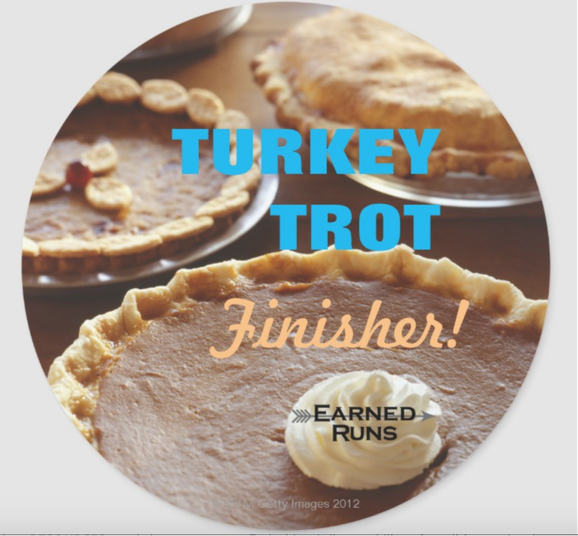
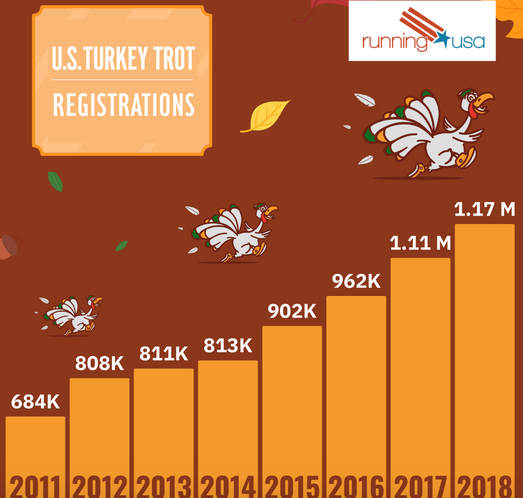
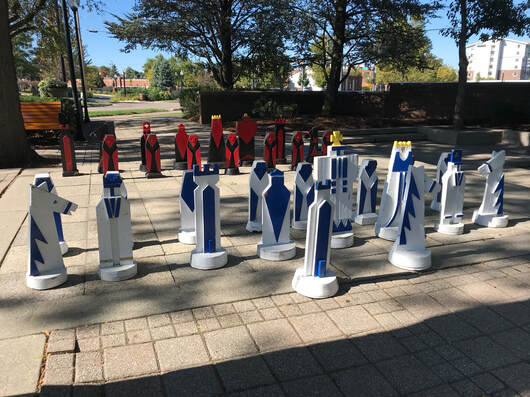
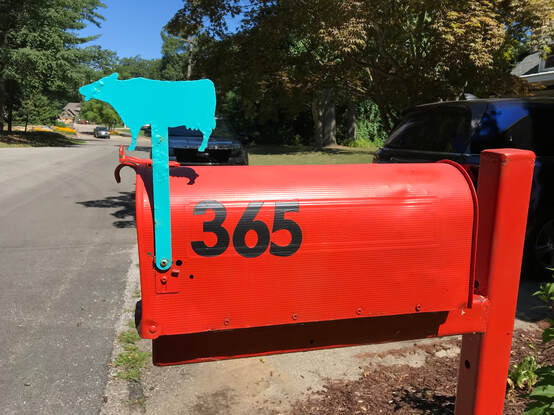
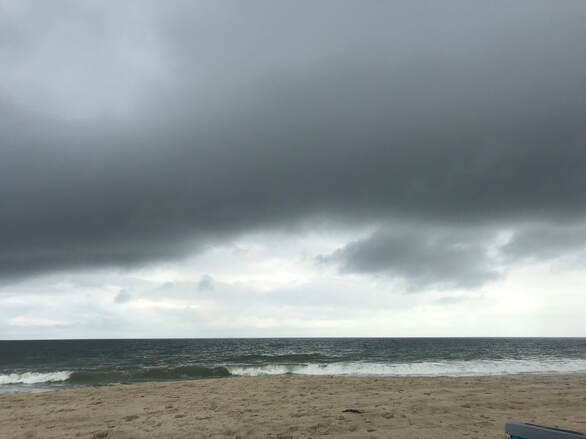
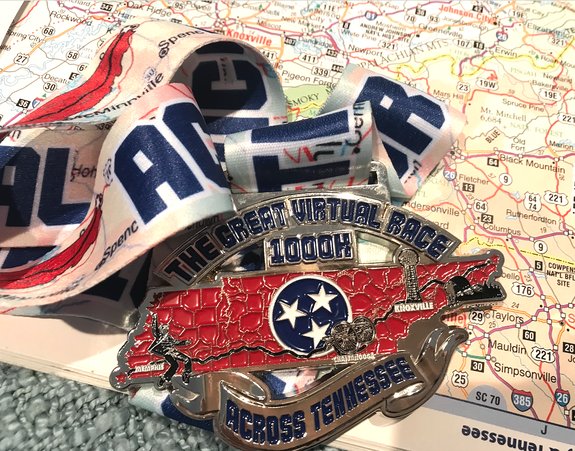
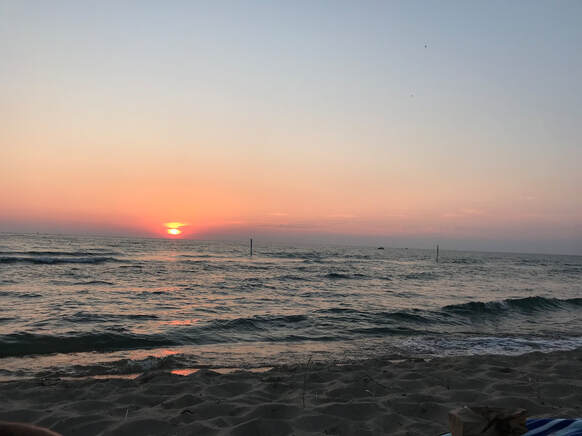
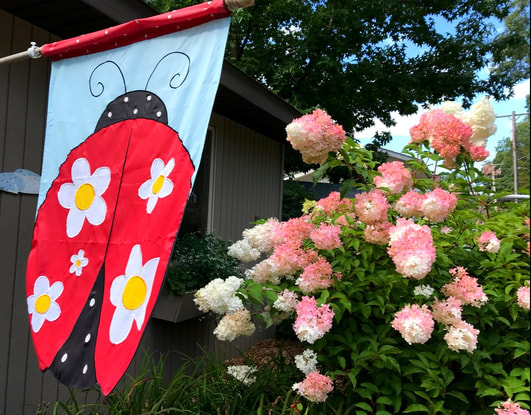
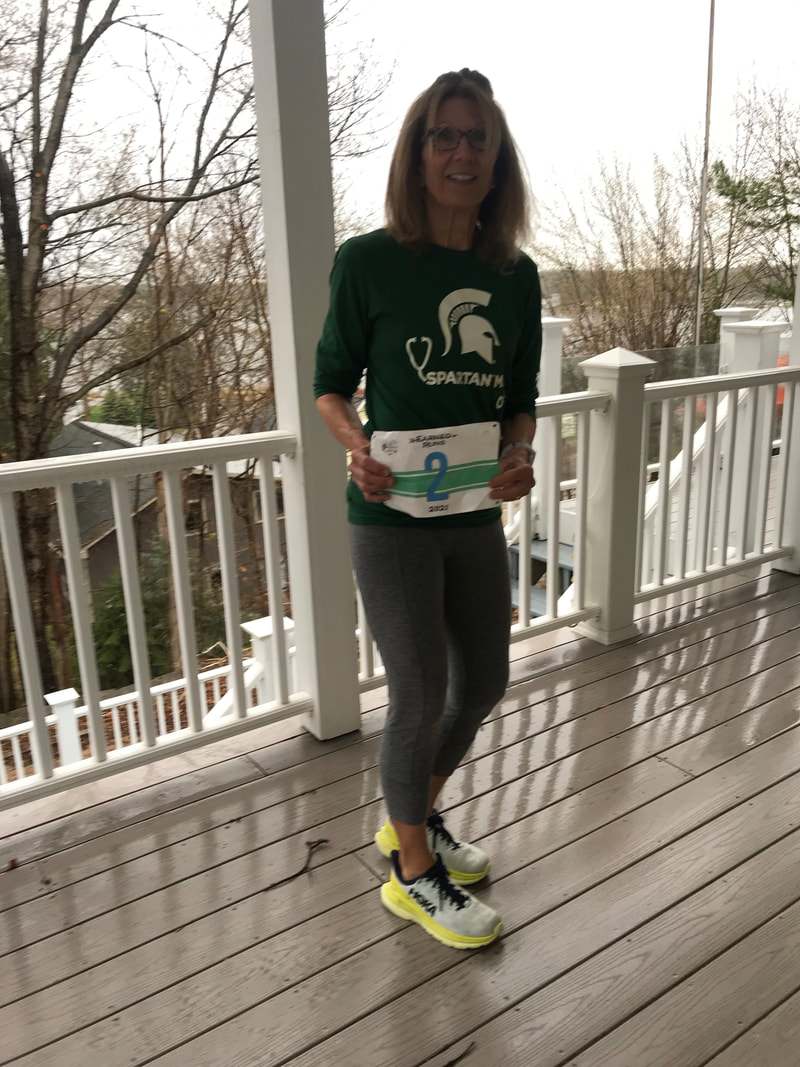
 RSS Feed
RSS Feed